Across the street from the iconic Colosseum in Rome lies the Domus Aurea, Emperor Nero’s famed Golden House. This sprawling architectural masterpiece, built nearly 2,000 years ago, was a symbol of opulence and artistic innovation in the Roman Empire. Recent excavations have brought to light a remarkable find—a chunk of Egyptian blue pigment, a material rarely preserved in such a pristine state. This discovery not only sheds light on Roman artistry but also connects us to the cultural and technological advancements of the ancient world.
The Golden House of Nero: A Historical Marvel
Constructed after the Great Fire of Rome in 64 CE, the Domus Aurea was Nero’s ambitious project to create a palace that reflected his grandeur. The structure was adorned with elaborate frescoes, gold-leaf ceilings, and intricate mosaics, spanning an estimated 300 acres. The palace’s name, “Golden House,” is a testament to its lavish decor.
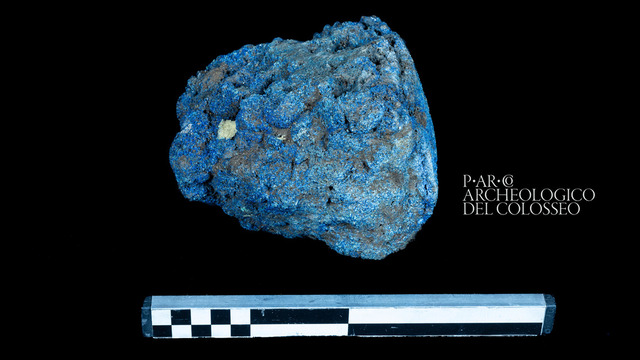
Though much of the Domus Aurea has been lost to time, its remnants continue to captivate archaeologists and historians. The site not only represents a pinnacle of Roman engineering but also offers a window into the empire’s cultural priorities—luxury, innovation, and artistic expression.
Watch as an ancient pigment discovery sheds new light on Nero’s luxurious palace – explore the video to uncover how this find is reshaping our understanding of Roman opulence!
Room 9: An Ancient Workshop Rediscovered
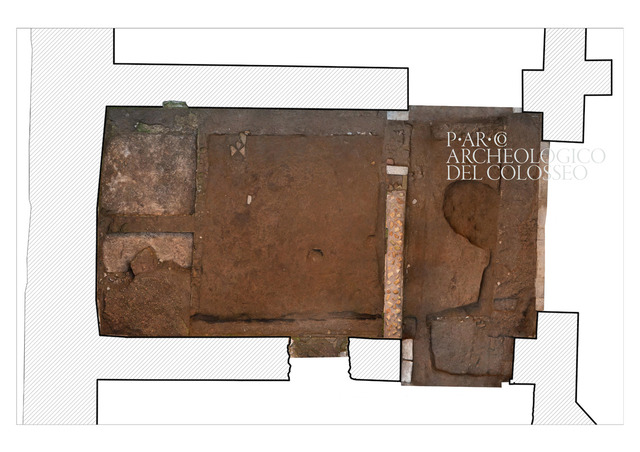
As part of ongoing restoration and excavation efforts, archaeologists turned their attention to a small room located near the palace’s outer edge. Dubbed Room 9, this space functioned as a pigment workshop during the construction of the Domus Aurea. Within the workshop, researchers uncovered two rectangular tanks, likely used for mixing pigments and creating vibrant colors for the palace’s wall paintings.
These tanks were not empty. They contained pottery fragments and vases filled with traces of red and yellow pigments, hinting at the diverse palette employed by Roman artisans. But the most extraordinary discovery was a solid chunk of Egyptian blue, an artifact that would soon reveal its historical significance.
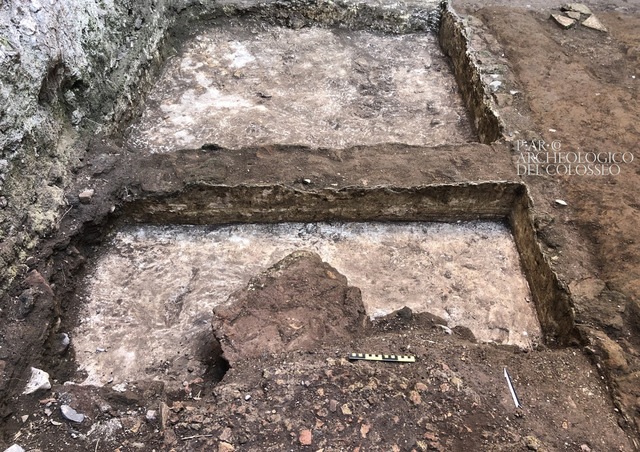
The Remarkable Egyptian Blue
Egyptian blue, one of the earliest synthetic pigments, has a history dating back over 5,000 years to ancient Egypt. This brilliant azure pigment was created by heating a mixture of sand, copper, and calcium compounds at high temperatures. It was prized not only for its striking color but also for its durability and versatility.
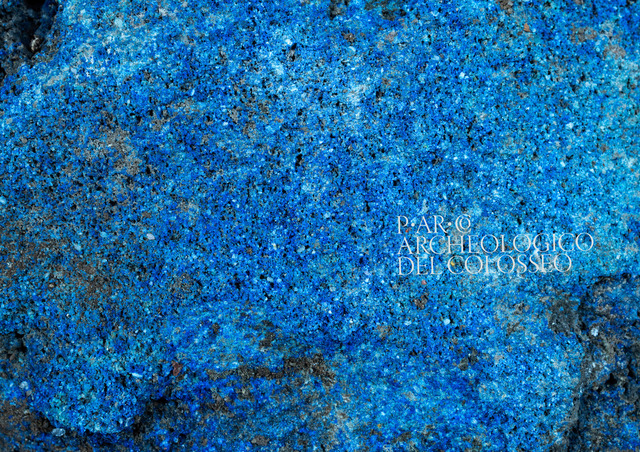
The chunk found at the Domus Aurea measures six inches tall and weighs over five pounds—an exceptionally large specimen, as Egyptian blue is typically preserved as a powder or in tiny fragments. Its vibrant hue remains as mesmerizing today as it was centuries ago, a testament to the ingenuity of ancient craftsmen.
A Palette of Colors: Insights into Roman Art
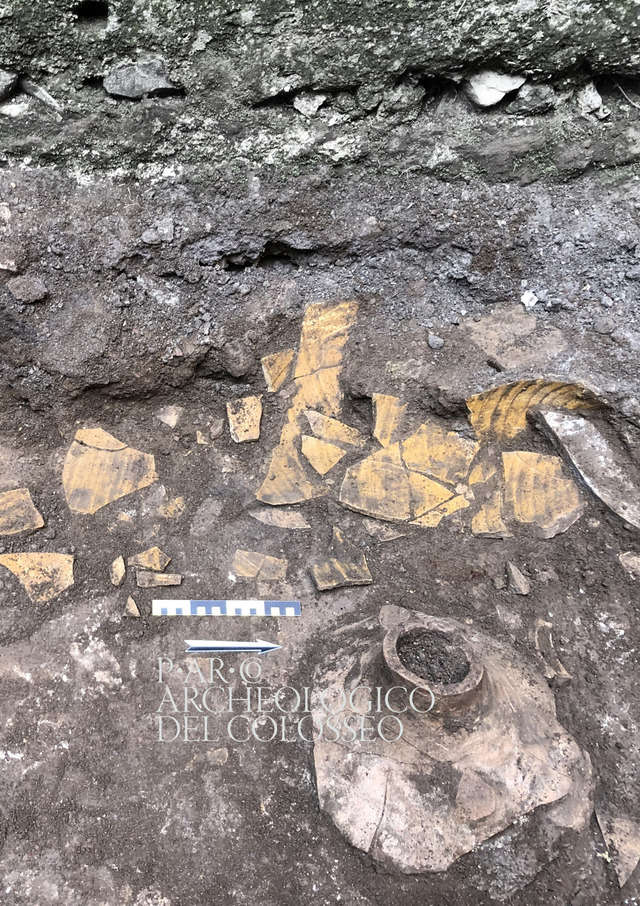
The discovery of Egyptian blue is just one piece of the artistic puzzle unearthed in Room 9. Archaeologists also found pottery containing yellow ochre and vases filled with multiple shades of red. These pigments were likely used to create the elaborate frescoes that once adorned the walls of the Golden House.
The combination of colors highlights the sophistication of Roman art, where pigments were meticulously prepared and applied to achieve depth, vibrancy, and symbolic meaning. Egyptian blue, for instance, was often associated with the divine, the eternal, and the infinite, adding a layer of cultural significance to its artistic use.
Archaeological Challenges and Modern Techniques
Excavating the Domus Aurea is no simple task. The site’s proximity to the Colosseum and its fragile state demand meticulous care. Archaeologists must navigate logistical challenges, such as stabilizing crumbling structures, while preserving the integrity of the artifacts they uncover.
Modern technology plays a crucial role in these efforts. Advanced imaging techniques and 3D modeling allow researchers to document findings with precision, ensuring that each discovery contributes to a broader understanding of the site. This blend of ancient history and modern science exemplifies the evolving nature of archaeology.
The Broader Significance of Egyptian Blue
The discovery of Egyptian blue at the Domus Aurea extends beyond its artistic value. It underscores the interconnectedness of ancient civilizations. Egyptian blue, originally developed in the Nile Valley, became a coveted material throughout the Mediterranean and beyond. Its presence in Rome reflects the vast trade networks and cultural exchanges of the Roman Empire.
This find also highlights the technological advancements of the time. The ability to synthesize and use such a pigment demonstrates a sophisticated understanding of chemistry and craftsmanship, bridging the gap between art and science in antiquity.
What Lies Ahead for the Domus Aurea
The excavation of Room 9 is just one chapter in the ongoing story of the Domus Aurea. As archaeologists continue their work, new discoveries are likely to emerge, further illuminating the lives, ambitions, and artistry of those who lived during Nero’s reign.
The site itself remains a testament to the enduring allure of ancient Rome. Every artifact, from a chunk of pigment to a fragment of pottery, contributes to a richer narrative about the empire’s cultural and technological achievements.
Video
Discover the rarest pigment in the world in this fascinating Colour the Spectrum of Science video – watch to explore the science behind this elusive color and its unique properties!
Conclusion: A Glimpse Into the Past
The discovery of Egyptian blue at Nero’s Golden House is more than a rare archaeological find; it is a vivid reminder of the ingenuity and creativity that defined ancient civilizations. Through the lens of this vibrant pigment, we gain insight into the artistic and cultural endeavors that shaped one of history’s most iconic empires.
As excavations continue, the Domus Aurea promises to reveal even more secrets, connecting us to the past in ways that are as vibrant and enduring as the colors found within its walls.
